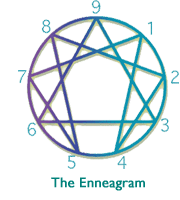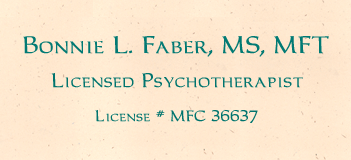Understanding the Enneagram — Understanding Ourselves
 Whenever you desire to understand any process more clearly, as well as why any course of action does or does not work, the Enneagram can serve as an invaluable guide. The practical applications of the Enneagram are boundless because it is a system that clarifies the mutually sustaining, self-balancing components that are a part of any complex process.
Whenever you desire to understand any process more clearly, as well as why any course of action does or does not work, the Enneagram can serve as an invaluable guide. The practical applications of the Enneagram are boundless because it is a system that clarifies the mutually sustaining, self-balancing components that are a part of any complex process.
For example, to be successful in business, one needs vision and confidence (Eight), the ability to listen to people and bring them together (Nine), quality control and ethical standards (One), the ability to anticipate people’s needs and serve them adequately (Two), communication and promotional skills (Three), a well-designed product or service and an awareness of its impact on individuals (Four), innovative ideas and technical expertise (Five), self-regulating feedback and teamwork (Six), and optimistic energy (Seven).
Thus, each numerical type described by the Enneagram can be seen metaphorically as a necessary component of the whole.
Because the robust analysis the Enneagram allows can be performed on an amazing variety of phenomena, we can use the Enneagram to understand business applications, relationships, parenting, cultural differences and personal growth, to name but a few.
However, no matter how we choose to use the Enneagram — be it for personal growth, help with relationships, psychotherapy, or in the business world — the first and foremost necessity is to determine our own personality type. But discovering our personal type is only the first step in the process of self-discovery. In working with the Enneagram, finding our type is not the final goal, but merely the starting point for one of the most fascinating and rewarding journeys of self-discovery possible.
The Enneagram is a dynamic map of human personality that reveals the different ways we organize experience and find meaning in our lives. It describes nine distinct patterns of attitude and behavior and reveals the underlying motivations for why we think and behave the way we do. Using the knowledge of the different personality styles of the Enneagram provides a foundation for a better understanding of ourselves. But more than this, understanding the Enneagram can help us towards healthy relationships by understanding the needs and perspectives of those we love.
A Brief History of the Enneagram
While ideas that inspired the creation of the modern Enneagram are at least as old as classical Greek philosophy, most knowledge of it — including its applications in psychotherapy — come from contemporary scholars and practitioners. Teachers and students of the Enneagram share many fundamental ideas, but there also exist significant differences ranging from areas of emphasis to underlying philosophical biases. As such, there really is no such thing as “the Enneagram,” as the Enneagram is not a set of laws but a work-in-progress being contributed to by numerous approaches that have sprung up around the world.
In most number systems dating back to antiquity, there are only nine numbers and all other numerical values are created from these nine digits. The Enneagram is symbolized by a circle with nine points connected in a distinctive pattern of intersecting lines. This geometric pattern, reputed to have been discovered by mystic mathematicians, contains a central equilateral triangle which forms the core with six other points forming around the central triangle. Patterns of three exist throughout the system. The three points of the central triangle represent the core points of human personality and identity:
- The Body – When a human being is first born, the first identification is that made with the physical being (hunger, discomfort, etc.).
- The Emotions – As an infant grows, learning to understand and communicate emotions are the next steps of development.
- The Intellect – And, finally comes the ability to reason and use logic separate from the emotional spheres.
Many assume that everything known about the Enneagram comes from ancient oral traditions of Sufi mystics, but the true origins of the Enneagram are unknown. What is certain is that the pattern of the Enneagram can be found on ancient temples throughout the East predating the Sufi tradition.
The first major figure in the Enneagram’s modern development is Gurdjieff, a Russian mystic credited with having brought the Enneagram to the West in the beginning of the 20th century. Gurdjieff and his best-known student, P. D. Ouspensky, taught the Enneagram as a system for understanding cosmological processes. And, while they did not teach anything about many of the modern applications of the Enneagram, many of the philosophical ideas underlying the modern Enneagram derive directly from their teachings.
There can be little argument that the father of the modern Enneagram of types as used in psychotherapy is Oscar Ichazo. Ichazo appears to have been the first to relate the nine divine qualities — found in mystical Christianity, Kabbalah, Neoplatonism, and other sources — to the Enneagram symbol. He also contributed the theory of the arrows, the theory of the wings, and related ideas about the three Instincts and the three Centers, to name but a few.
Claudio Naranjo, a former student of Fritz Perls, the founder of Gestalt therapy, studied the Enneagram under Ichazo and became the Enneagram’s next most important contributor. Naranjo used his background in psychiatry to elaborate on the alignment between the nine types described by Ichazo and other psychological categories, such as the Diagnostic and Statistical Manual (DSM) personality disorders, various defense mechanisms, and other personality theories. In one way or another, all modern Enneagram practitioners have built their work on Ichazo’s and Naranjo’s insights.
More recently, author Helen Palmer and David Daniels, M.D., a psychiatrist and professor at Stanford Medical School, brought their years of experience working with the Enneagram to the fields of psychology, business, education, and spiritual direction. Palmer and Daniels founded several training programs in the San Francisco Bay Area, and around the world, for Enneagram teachers. These programs certify professionals in the ethical development and promotion of Enneagram work on an ongoing basis.
Improving Your Relationships with the Enneagram
Eventually we all need to learn that our happiness in life depends to a large extent on the quality of our relationships, not just with ourselves but with others. We do not thrive in isolation. Having healthy, constructive relationships with partners, friends, family and colleagues is necessary for our fulfillment and happiness.
The Enneagram can help us become much clearer about our relationship issues, values, expectations, communication styles, patterns of thinking and decision making, methods of conflict resolution, and various coping mechanisms. These apply to all of our interpersonal interactions, be they personal or professional. Each personality type has different motivations, which in turn lead to different values, approaches and desires in their relationships.
Rewarding relationships depend on our ability to understand ourselves as well as others. We must be able to see and accept the needs and viewpoints of others while being able to express our own. We must be able to treat others as we wish to be treated, even if we haven’t been treated well by others in the past. Using the Enneagram can help us understand our underlying motivations, allowing us to revisit the past and consciously transform ourselves and our relationships in the present.
Becoming a Better Parent Using the Enneagram
First, to be clear, parents do not create a child’s personality type. Almost all Enneagram researchers and practitioners agree that personality type is built on temperament, which is inborn not learned. However, this is not to say that early family conditions and parental influences are unimportant, far from it!
While parent-infant relationships do not cause personality types, they contribute to how type develops and strongly influence how emotionally healthy or unhealthy a child becomes. A child fortunate enough to be born into an emotionally and behaviorally well-balanced family will begin life as a relatively healthy example of his or her type. A child born into a relatively dysfunctional family will need to erect defenses that close down his or her natural openness, spontaneity and vitality.
In short, parenting counts! Therefore, when parents work on themselves using tools such as counseling and the Enneagram, they are not only doing something positive for themselves, they are making possible an emotionally healthy childhood and a happier future for their children. Truly one of the greatest gifts any parent can give their child!
This is not to say that understanding yourself or your child will be enough to undo any existing or potential issues. However, without understanding and insight there can be no solutions. Above all else, using the Enneagram in conjunction with psychotherapy can help parents view and treat their children as independent beings who have their own value and are worthy of both dignity and respect.
Thriving with the Enneagram
The primary use of the Enneagram is for self-discovery and personal growth. When the Enneagram is used effectively it is to recognize patterns. By observing your behavioral patterns, you allow yourself the ability to step back from them without judgment. This type of observation shines the light of consciousness on our unconscious behaviors and perceptions. To paraphrase Sigmund Freud, the Enneagram helps “make the unconscious conscious” bringing to light that which was previously hidden from our view. When we bring something into the light it loses its power and our unknown fixations lose their grip. This awareness is the beginning step in the process of self-transformation.
Learning about their Enneagram type has helped many of my patients not only see the underlying patterns of their behaviors but also to appreciate their defenses in a compassionate light. By learning about the common experiences of other people with the same Enneagram type, patients realize they are not alone or unique in their problems. Additionally, the Enneagram suggests ways to transform the suffering caused by our personality defenses. Simply by learning to observe our defenses rather than act them out, we become closer to consciously changing our destructive behavior patterns into constructive behaviors.
Warning, Use with Caution
Of course, once you’ve identified your fixations, there is a danger of identifying yourself with them. This can be done by justifying or judging your behavior, such as when someone says “I always do it that way, you know I’m a Nine” or “If only I wasn’t a Two I would be able to approach it differently.” However, this doesn’t help and is not what the Enneagram is intended for.
Another danger of the Enneagram lies in its ability to identify character tendencies with great accuracy. Unfortunately, this can make it tempting to use the Enneagram to label issues and predict behavior. However, if it ultimately is used as another labeling system, its potential as a transpersonal resource becomes lost. Recognizing certain behaviors as being those of a certain type may cause one to miss the essence of another person and limit understanding of each person’s uniqueness.
Would You Like To Know More?
Ultimately, the Enneagram is an “inside job” of determining your type and coming to know and understand your own focus of attention, core beliefs, coping strategies and path of development. The value of the Enneagram does not come mainly from identifying your type based on external behaviors, but from understanding how behavioral patterns relate to each type’s focus of attention, motivation and personal experience. The active role each of us plays in noticing his or her own patterns helps create conscious awareness, which leads to conscious conduct.
Certainly not everyone is interested in learning more about the Enneagram. And it is not necessary for you to acquire knowledge of this field for it to be useful in therapy. However, the common language and perspective the Enneagram provides can enhance the therapeutic relationship and provide a road map that can be understood and discussed by therapist and patient. If you are interested in learning more about the Enneagram, please review the resources below and/or contact me for additional information.
For more information on the Enneagram visit:

